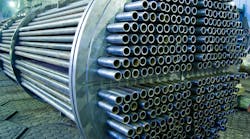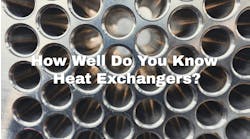Something had changed in the crude unit. The performance of heat exchanger E-126 had declined rapidly once again — heat recovery was down by 60%. It had already been cleaned three times in the past twelve months. I extracted data from the plant historian, calculated heat transfer coefficients, made a flashy plot to show the time-dependence, then presented it to the managers; they were impressed and agreed that something had changed in the past year. What could it be? Feed contamination? Additives? Water quality to the desalter?
One of the site engineers took a different approach. He visited the hydroblasting contractor who cleaned the unit, talked to some of the workers, and observed their operations. He discovered high staff turnover, which led to a serious loss of expertise. As a result, “cleaned” tube bundles retained significant amounts of residual fouling. That fouling triggered additional deposition when the tube bundles were placed back in service. This caused the rapid decay in heat transfer we had observed. I had been chasing red herrings, looking for changes inside the refinery.
Fouling of heat exchangers frequently impacts heat recovery and, thus, affects energy efficiency. However, this is not often the main problem. For example, in preheat trains and feed-effluent systems, fouling can cause flow restrictions due to blockages, and poor heat transfer can lead to high product rundown temperatures. Both of these conditions can create capacity bottlenecks. Fouling in overhead condensers can restrict heat removal, prompting a rise in column overhead temperature and pressure. This, in turn, results in a decline in separation efficiency and difficulty meeting product specifications, as well as an increase in energy intensity.
Periodic cleaning of heat exchangers is the most common way to mitigate the effects of fouling; if you plan to clean heat exchangers while the plant is running, you need bypass piping and isolation valves for the equipment. However, not all cleaning programs are created equal. Some plants conduct cleanings on a pre-determined schedule. Others only perform cleanings when operating problems, such as hydraulic restrictions or unacceptably high rundown temperatures, become apparent. Elsewhere, process engineers conduct systematic monitoring of heat exchanger performance to calculate heat transfer coefficients. This provides a quantitative method for identifying which heat exchangers are most badly fouled. The results help prioritize heat exchangers for cleaning.
However, declining heat transfer coefficients alone are not always a good indicator for cleaning. For example, a loss of heat recovery in a heat exchanger at the front end of a crude preheat train usually is offset partially by increased heat recovery in downstream heat exchangers. To quantify the benefit of cleaning a given heat exchanger, we must calculate not only the change in its heat load but also the knock-on effects throughout the preheat train. The most-effective cleaning programs are based on on-line monitoring of critical heat exchangers, coupled with models that account for preheat train interactions, energy costs and cleaning costs, to calculate the overall energy savings and schedule the cleaning of each individual heat exchanger. In many crude units, this can yield annual savings of hundreds of thousands of dollars, with benefit ratios (energy savings:cleaning costs) of 3:1 or better.
Two common methods for cleaning shell and tube heat exchangers exist, hydroblasting and chemical cleaning. Hydroblasting involves spraying water at pressures of 10,000 psi or above at high velocities directly onto the tube surfaces through engineered lance assemblies. Chemical cleaning uses a combination of chemistry, flow, time and temperature to remove the foulants. The selection of the right chemicals, as well as other cleaning parameters, is critical to success. In hydroblasting, the tube bundles usually are removed from their shells and sent to a central pad for cleaning. In contrast, chemical cleaning can be carried out in situ, which typically makes it a quicker and cheaper option. Both methods can be very effective, but it is important to choose the most appropriate form of cleaning for each situation.
For further details and examples, see: Alan P. Rossiter & Beth P. Jones, “Energy Management and Efficiency for the Process Industries,” Wiley-AIChE, 2015, pp. 139-163.



